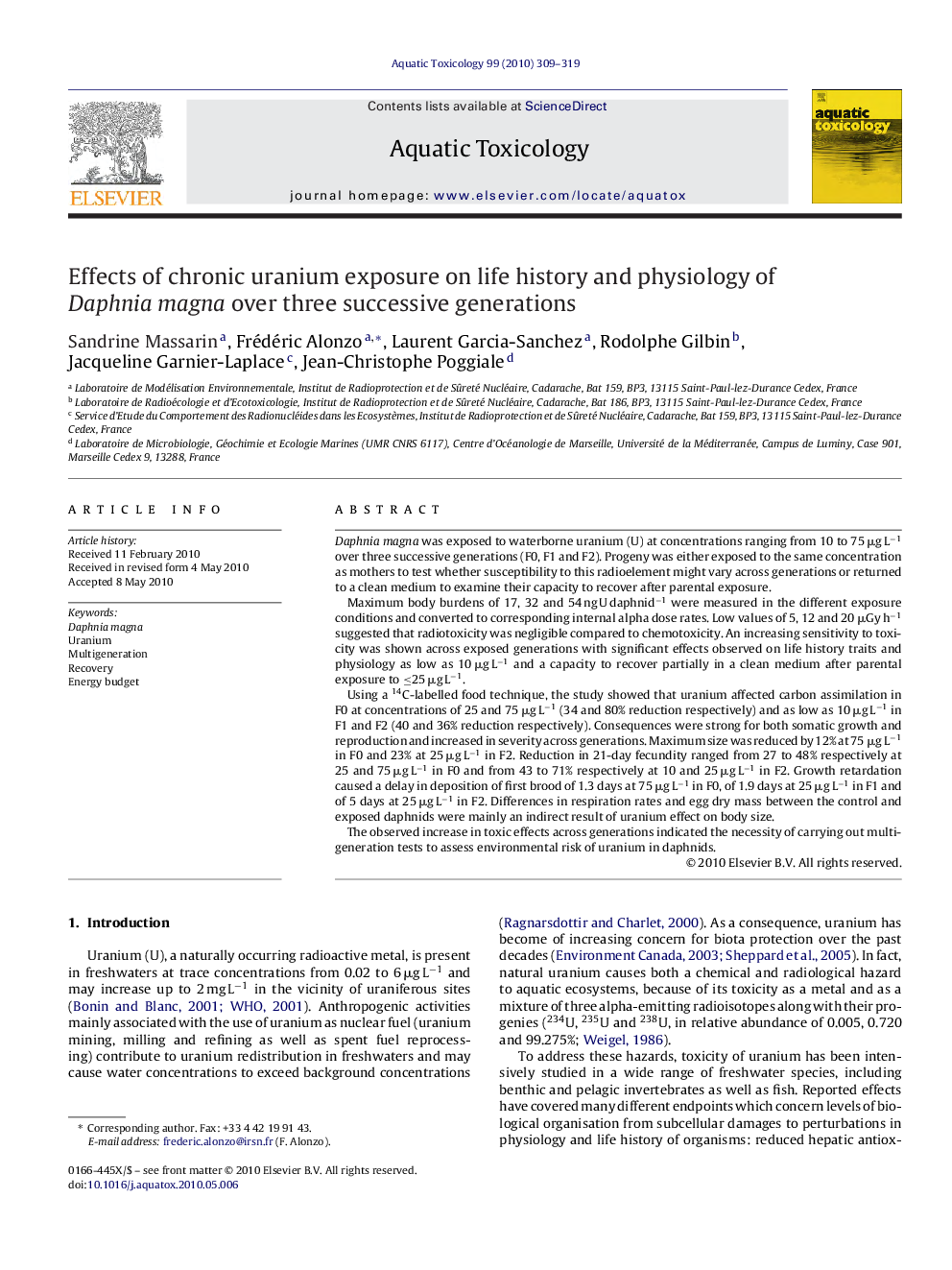| کد مقاله | کد نشریه | سال انتشار | مقاله انگلیسی | نسخه تمام متن |
|---|---|---|---|---|
| 4530158 | 1324685 | 2010 | 11 صفحه PDF | دانلود رایگان |

Daphnia magna was exposed to waterborne uranium (U) at concentrations ranging from 10 to 75 μg L−1 over three successive generations (F0, F1 and F2). Progeny was either exposed to the same concentration as mothers to test whether susceptibility to this radioelement might vary across generations or returned to a clean medium to examine their capacity to recover after parental exposure.Maximum body burdens of 17, 32 and 54 ng U daphnid−1 were measured in the different exposure conditions and converted to corresponding internal alpha dose rates. Low values of 5, 12 and 20 μGy h−1 suggested that radiotoxicity was negligible compared to chemotoxicity. An increasing sensitivity to toxicity was shown across exposed generations with significant effects observed on life history traits and physiology as low as 10 μg L−1 and a capacity to recover partially in a clean medium after parental exposure to ≤25 μg L−1.Using a 14C-labelled food technique, the study showed that uranium affected carbon assimilation in F0 at concentrations of 25 and 75 μg L−1 (34 and 80% reduction respectively) and as low as 10 μg L−1 in F1 and F2 (40 and 36% reduction respectively). Consequences were strong for both somatic growth and reproduction and increased in severity across generations. Maximum size was reduced by 12% at 75 μg L−1 in F0 and 23% at 25 μg L−1 in F2. Reduction in 21-day fecundity ranged from 27 to 48% respectively at 25 and 75 μg L−1 in F0 and from 43 to 71% respectively at 10 and 25 μg L−1 in F2. Growth retardation caused a delay in deposition of first brood of 1.3 days at 75 μg L−1 in F0, of 1.9 days at 25 μg L−1 in F1 and of 5 days at 25 μg L−1 in F2. Differences in respiration rates and egg dry mass between the control and exposed daphnids were mainly an indirect result of uranium effect on body size.The observed increase in toxic effects across generations indicated the necessity of carrying out multigeneration tests to assess environmental risk of uranium in daphnids.
Journal: Aquatic Toxicology - Volume 99, Issue 3, 1 September 2010, Pages 309–319